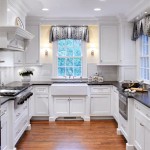The Transformative Power of Colorful Home Decor
Home decor plays a significant role in shaping the atmosphere and reflecting the personality of its inhabitants. While neutral palettes offer a sense of calm and sophistication, incorporating color can inject vibrancy, energy, and individuality into living spaces. Thoughtful use of color can dramatically alter the perception of a room's size, create focal points, and evoke specific emotions. This article explores the strategic application of colorful decor to enhance the aesthetic appeal and functionality of a home.
Understanding the Psychology of Color
Color psychology is a fundamental aspect of interior design. Different colors evoke different emotional responses, and understanding these associations is critical when selecting a color scheme for a home. For example, blue is generally associated with tranquility, peace, and stability, making it a suitable choice for bedrooms or bathrooms. Green is linked to nature, growth, and renewal, often utilized in living rooms or home offices to promote a sense of well-being and focus. Yellow represents optimism, happiness, and energy, best employed in smaller doses as an accent color in kitchens or dining areas. Red, a strong and stimulating color, symbolizes passion, excitement, and power; its use should be carefully considered, often reserved for accent walls or accessories to avoid overwhelming the space. Purple, associated with royalty, creativity, and wisdom, can add a touch of luxury and sophistication to living rooms or bedrooms. Finally, orange combines the energy of red and the happiness of yellow, signifying enthusiasm, warmth, and creativity, often used in children's rooms or areas designed for social interaction.
Beyond general associations, personal preferences and cultural influences also play vital roles in shaping color perceptions. What one individual perceives as comforting, another might find unsettling. Similarly, colors that hold positive connotations in one culture may be associated with negative meanings in another. For instance, white symbolizes purity in Western cultures but represents mourning in some Eastern cultures. Therefore, a nuanced approach is required when selecting colors, considering both psychological effects and individual or cultural sensitivities.
Furthermore, the intensity or saturation of a color can significantly impact its perceived effect. A muted, pastel blue will create a different atmosphere compared to a vibrant, electric blue. Similarly, a soft, sage green will evoke a different feeling than a bold, emerald green. Experimenting with different shades and tones within a chosen color family allows for greater customization and control over the overall ambiance of a space.
Strategic Implementation of Color in Different Rooms
The application of color should be tailored to the specific function and purpose of each room. For instance, bedrooms, designed for rest and relaxation, benefit from calming and soothing colors such as blues, greens, and soft purples. These colors create a tranquil atmosphere conducive to sleep and rejuvenation. In contrast, living rooms, often used for socializing and entertainment, can handle bolder and more energetic colors, such as oranges, yellows, or reds, when used strategically as accents. Neutral backgrounds, such as grays, beiges, or whites, provide a versatile canvas for incorporating colorful furniture, artwork, and accessories.
Kitchens, traditionally spaces for practical functionality, can be invigorated with pops of color. Bright yellows and oranges can stimulate appetite and create a cheerful atmosphere, while greens and blues can promote a sense of freshness and cleanliness. Backsplashes, cabinet hardware, and small appliances offer opportunities to introduce color without overwhelming the space. Dining rooms, designed for shared meals and conversation, benefit from warm and inviting colors such as reds, oranges, and yellows. However, moderation is key, as excessive use of these colors can be overstimulating. Combining warm colors with neutral tones and natural materials, such as wood and stone, can create a balanced and welcoming environment.
Bathrooms, often small and enclosed spaces, can be transformed with the strategic use of color. Light and airy colors, such as whites, blues, and greens, can create a sense of spaciousness and cleanliness. Accent walls, colorful towels, and decorative accessories can add personality and visual interest without overwhelming the room. Home offices, designed for focused work and productivity, benefit from colors that promote concentration and creativity. Greens and blues are excellent choices for creating a calming and inspiring atmosphere, while yellows and oranges can stimulate creativity and energy. Careful consideration of lighting is also crucial in home offices, as natural light can enhance the positive effects of color.
Techniques for Incorporating Color
There are various techniques for incorporating color into home decor, ranging from subtle accents to bold statements. One of the most common is to use a neutral color palette as a foundation and introduce color through accessories such as pillows, throws, rugs, and artwork. This allows for easy updates and changes as personal preferences evolve or trends shift. Another approach is to paint an accent wall, creating a focal point and adding visual interest to a room. Accent walls can be used to highlight architectural features, such as fireplaces or windows, or to define specific areas within a larger space.
Furniture is another effective way to introduce color into a home. Colorful sofas, chairs, or tables can serve as statement pieces and anchor the design of a room. Upholstery fabrics offer a wide range of colors, patterns, and textures, allowing for endless customization and personalization. Similarly, painted furniture can add a touch of whimsy and character to any space. Another technique is to use color blocking, which involves combining large blocks of contrasting colors to create a bold and graphic effect. This can be achieved through painting walls, arranging furniture, or using textiles with strong color contrasts.
Textiles, such as curtains, drapes, and bedding, provide ample opportunities to incorporate color and pattern. These elements can be easily changed to reflect seasonal trends or personal preferences. Consider the interplay between different textures and patterns when selecting textiles, as this can add depth and dimension to a room. Finally, plants and flowers are natural and vibrant ways to introduce color and life into a home. Green foliage creates a sense of freshness and tranquility, while colorful blooms add pops of joy and beauty. Indoor plants also offer the added benefit of purifying the air and improving overall well-being.
Ultimately, successful integration of colorful home decor requires a thoughtful and balanced approach. By understanding the psychology of color, considering the specific function of each room, and employing a variety of techniques, it's possible to create a home that is both visually appealing and emotionally resonant. Furthermore, considering light and brightness levels is pivotal. A bright sunlit room can handle more intense shades than a dimly lit space. Similarly, the existing architectural elements of a room, such as exposed brick or wooden beams, influence the overall aesthetic and should be taken into account when selecting a color palette.

27 Colorful Home Design Decorating Ideas Extra Space Storage

27 Colorful Home Design Decorating Ideas Extra Space Storage

Guide For Colorful Home Decor How To Use Colors In Interiors

Popular Colorful Living Room Decor Ideas Perfect For Summer Homyhomee Bedroom Colors Home

27 Colorful Home Design Decorating Ideas Extra Space Storage

Unique And Quirky Home Interior Design Ideas To Try Fineline

Festive Décor Inspirations For Lasting Impression Colourful Living Room Decor Bohemian

16 Best Colorful Living Room Design Ideas For 2025

Colorful Home Decor In Sweden

Colorful Home Decor And Accessories For 2025 Flower







